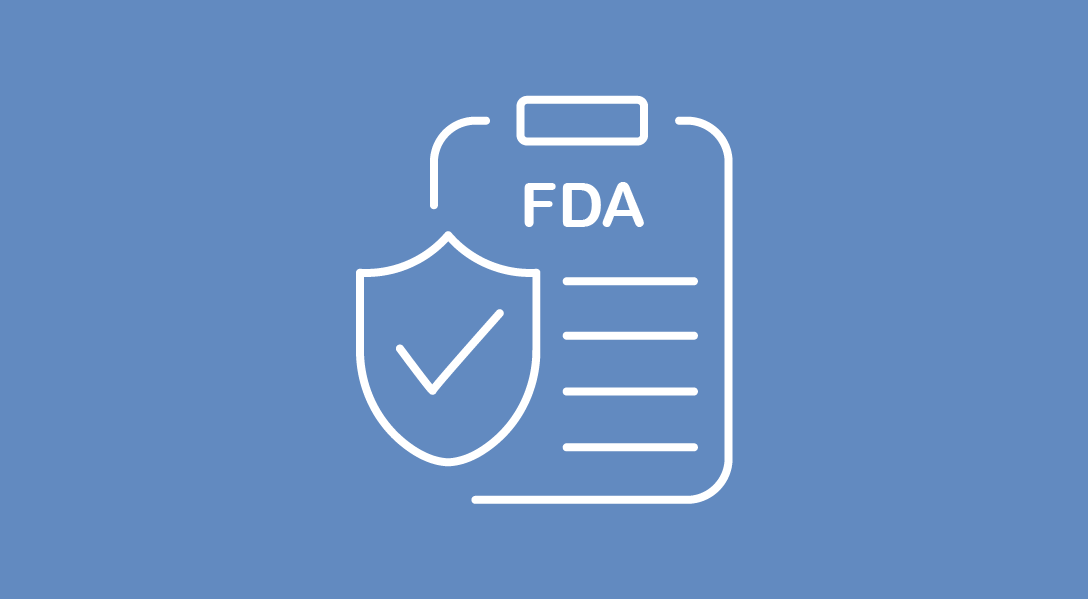Oncology Drugs Approved by the FDA in January 2025
January's FDA oncology approvals offer new treatment options for breast cancer, mantle cell lymphoma, and other malignancies.
FDA approvals in January included treatments using fam-trastuzumab deruxtecan-nxki, acalabrutinib, datopotamab deruxtecan, and treosulfan.

Throughout the month of January, the FDA has granted approval to several therapies to treat diseases including breast cancer, mantle cell lymphoma (MCL), acute myeloid leukemia (AML), and myelodysplastic syndrome (MDS).
Here is a list of oncology drugs that received FDA approval this past month.
T-DXd for HER2-Low and -Ultralow Metastatic Breast Cancer
The FDA has approved fam-trastuzumab deruxtecan-nxki (T-DXd; Enhertu) for unresectable or metastatic, HR-positive breast cancer with HER2-low or HER2-ultralow expression (IHC 1+ or 2+/ISH-, or IHC 0 with membrane staining, respectively), as determined by an FDA-approved test, in patients whose disease progressed after one or more lines of endocrine therapy in the metastatic setting.1
The FDA approval was based on results from the phase 3 DESTINY-Breast06 trial (NCT04494425).In chemotherapy-naive patients with HER2-low or HER2-ultralow metastatic breast cancer, T-DXd reduced the risk of disease progression or death by 36% compared to chemotherapy (HR = 0.64; 95% CI, 0.54-0.76; P < .0001).1,2 Median progression-free survival was 13.2 months (95% CI, 12.0-15.2) with T-DXd versus 8.1 months (95% CI, 7.0-9.0) with chemotherapy. T-DXd also nearly doubled the overall response rate (62.6% vs 34.4%).
Grade 3 or higher adverse events were reported in 52.8% of patients in the T-DXd arm and 44.4% of those in the chemotherapy arm. Adjudicated interstitial lung disease occurred in 11.3% of patients in the T-DXd arm, including 3 grade 5 events.
Acalabrutinib-Based Regimen for Previously Treated MCL
Acalabrutinib (Calquence) was approved by the FDA in two settings for MCL:in combination with bendamustine (Rituxan) and rituximab (BR) for previously untreated adults ineligible for autologous hematopoietic stem cell transplantation (HSCT), and as a single agent for previously treated adults.3
The frontline approval was based on the phase 3 ECHO trial (NCT02972840), which showed a significantly longer median progression-free survival (PFS) with acalabrutinib plus BR (66.4 months vs. 49.6 months; HR, 0.73; 95% CI, 0.57-0.94; P = .016) after a median follow-up of 49.8 months.
Acalabrutinib treatment resulted in similar overall adverse event rates compared to placebo, but more serious adverse events (69.0% vs 62.0%) and more frequent treatment discontinuations due to adverse events (42.8% vs 31.0%). Key acalabrutinib-related adverse events included infections, hypertension, secondary malignancies, atrial fibrillation, and major bleeding. In the acalabrutinib plus BR arm, 32.4% of patients died, with 10.0% of deaths due to disease progression.
Datopotamab Deruxtecan for Advanced Breast Cancer
Datopotamab deruxtecan-dlnk (Dato-DXd; Datroway) received approval from the FDA for adults with unresectable or metastatic, HR-positive, HER2-negative breast cancer that has progressed after endocrine therapy and chemotherapy.4
This approval was based on findings from the TROPION-Breast01 trial (NCT05104866). Dato-DXd significantly prolonged progression-free survival (PFS) compared to chemotherapy (6.9 vs 4.9 months; HR = 0.63; 95% CI, 0.52-0.76; two-sided P < .0001). Median overall survival (OS) was similar between the two groups and did not meet criteria for statistical significance, with 18.6 months for Dato-DXd and 18.3 months for chemotherapy (HR = 1.01; 95% CI, 0.83-1.22).
The most common side effects (observed in at least 20% of patients) were nausea, stomatitis, decreased white blood cell counts (including leukocytes, lymphocytes, and neutrophils), fatigue, hair loss, decreased calcium and hemoglobin levels, constipation, dry eye, vomiting, and increased liver enzyme levels (AST, ALT, and alkaline phosphatase), and keratitis.
The recommended dose is 6 mg/kg (up to a maximum of 540 mg for patients 90 kg or more) administered intravenously every 3 weeks. Treatment may continue until unacceptable toxicity or disease progression.
Treosulfan With Fludarabine for alloHSCT Conditioning in AML and MDS
The FDA approved treosulfan (Grafapex) plus fludarabine for adult and pediatric patients with AML or MDS as a preparative regimen for allogeneic hematopoietic stem cell transplantation (alloHSCT).5
This approval was based on positive results from the phase 3, open-label MC-FludT.14/L Trial II (NCT00822393), which showed improved OS with treosulfan plus fludarabine compared to busulfan plus fludarabine. When stratified by donor type and risk group, the HR for OS in the treosulfan group compared to the busulfan group was 0.67 (95% CI; 0.51-0.90). For patients with AML, the HR was 0.73 (95% CI; 0.51-1.06), and for those with MDS, the HR was 0.64 (95% CI; 0.40-1.02).6
The recommended dose for treosulfan is 10 g/m2 daily on days -4, -3, and -2, in combination with 30 mg/m2 of fludarabine daily on days -6, -5, -4, -3, and -2, followed by AlloHSCT infusion performed on day 0.
References
- Enhertu approved in the US as first HER2-directed therapy for patients with HER2-low or HER2-ultralow metastatic breast cancer following disease progression after one or more endocrine therapies. News Release. AstraZeneca. January 27, 2025. Accessed January 27, 2025. https://www.astrazeneca.com/media-centre/press-releases/2025/enhertu-approved-in-us-for-breast-cancer-post-et.html
- Bardia A, Hu X, Dent R, et al. Trastuzumab deruxtecan after endocrine therapy in metastatic breast cancer. N Engl J Med. 2024;391(22):2110-2122. doi:10.1056/NEJMoa2407086
- FDA approves acalabrutinib with bendamustine and rituximab for previously untreated mantle cell lymphoma. FDA. January 16, 2024. Accessed January 16, 2024. https://www.fda.gov/drugs/resources-information-approved-drugs/fda-approves-acalabrutinib-bendamustine-and-rituximab-previously-untreated-mantle-cell-lymphoma
- FDA approves datopotamab deruxtecan-dlnk for unresectable or metastatic, HR-positive, HER2-negative breast cancer. FDA. January 17, 2024. Accessed January 17, 2024. https://www.fda.gov/drugs/resources-information-approved-drugs/fda-approves-datopotamab-deruxtecan-dlnk-unresectable-or-metastatic-hr-positive-her2-negative-breast
- Medexus announces FDA approval of GRAFAPEX (treosulfan) for injection and provides business update. News release. Medexus Pharmaceuticals, Inc. January 22, 2025. Accessed January 24, 2025. https://www.medexus.com/en_US/news-media/press-releases/detail/176/medexus-announces-fda-approval-of-grafapex-treosulfan-for
- Clinical phase III trial treosulfan-based conditioning versus reduced-intensity conditioning (RIC). ClinicalTrials.gov. Updated July 30, 2020. Accessed January 24, 2025. https://clinicaltrials.gov/study/NCT00822393


